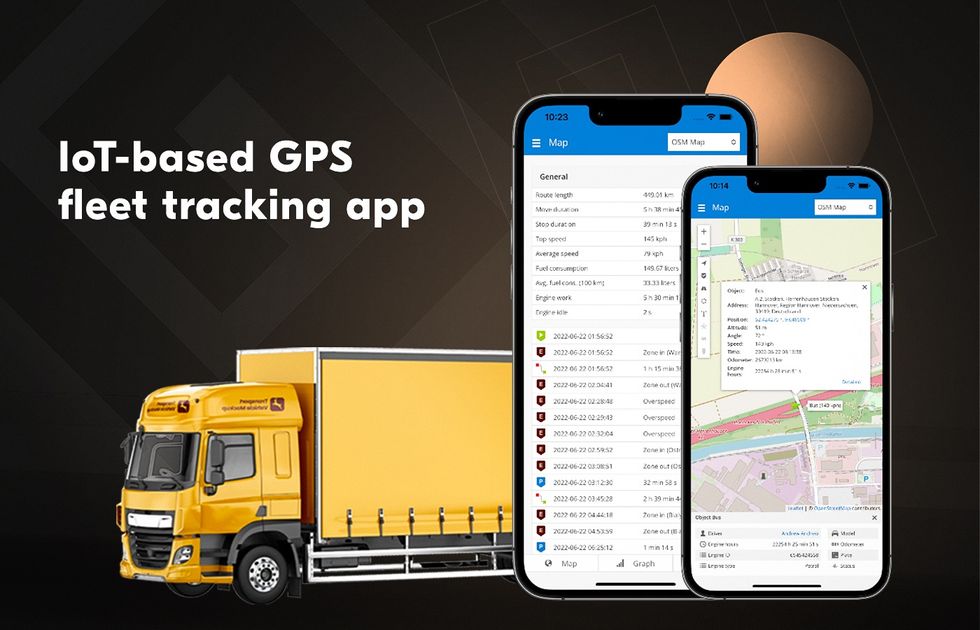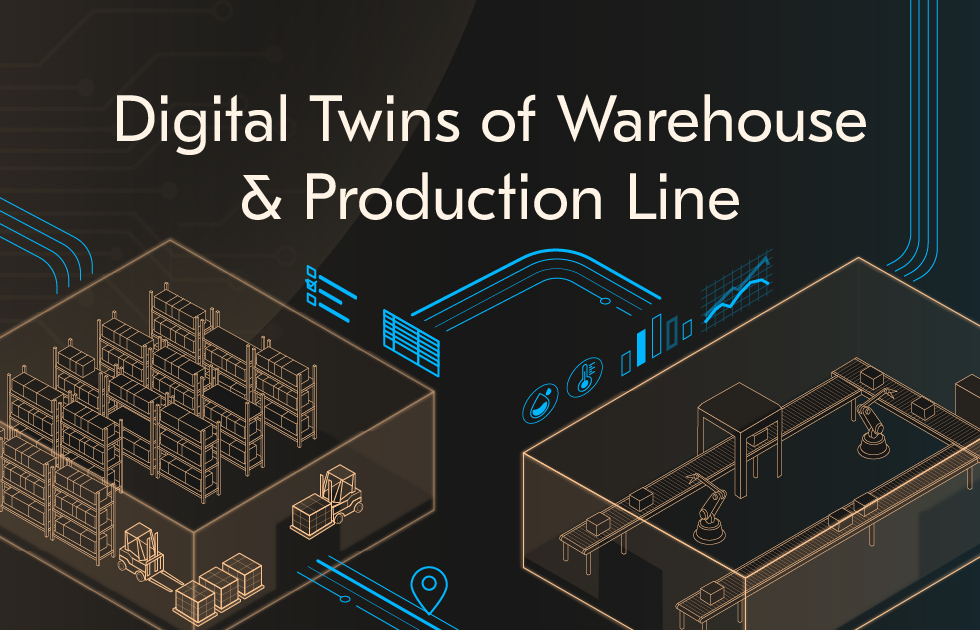
Flexibility, real-time process visibility, and automation are must-haves today. However, your logistics software may lack them if you haven’t modernized it yet. As the transportation industry evolves, vehicle manufacturers, megaretailers, and tech startups try hard to stay on top of trends to get part of the revenue streams. According to a Deloitte survey, 60% of transportation companies’ leaders believe that truck manufacturers will soon seek to become fleet managers.
Transportation management software modernization is essential to survive the tense competition, improve processes, and boost your company’s performance. This article will show you the benefits of upgrading your legacy transportation software, the challenges associated with it, and successful use cases.
So let’s dive in.
Importance and Benefits of Software Modernization in Logistics and Transportation
Software modernization is a critical investment for logistics companies to survive in today’s volatile and disruptive environment. In fact, as much as 61% of supply chain companies consider technology a key source of competitive advantage.
As technology continues to shape the logistics industry, those who fail to invest in modernizing their software risk falling behind their competitors well into their modernization journey. What’s more, using outdated logistics systems can result in:
- Lack of real-time visibility of supply chain operations
- Difficulty in managing big data
- Limited integration capabilities with other systems
- Increased risk of errors, dispatches, delays, and customer dissatisfaction
All these factors affect companies’ ability to grow, expand their operations, and respond to turbulent market demands. By making software maintenance and modernization a systematic effort, shipping platforms can streamline and optimize their business processes — and enjoy bigger profits.
Let’s look closer at the advantages of logistics software modernization.
Better visibility and control
According to the State of Last Mile Logistics report, 53% of third-party logistics (3PL) companies talk about the need for real-time visibility tools for shippers’ end customers. Modernizing logistics software can help companies improve the visibility of their supply chain operations. This usually leads to lower inventory costs, faster order fulfillment, and higher customer satisfaction.

For instance, UPS has optimized its logistics operations by integrating supply chain visibility software to give its customers enhanced control over their shipments with almost real-time tracking.
Improved accuracy and faster services
Implementing automation, trucking APIs (for supply chain integration with third-party logistics providers), blockchain, and IoT technologies as part of logistics software modernization, the companies can streamline transportation operations, making them error-free and transparent. This will save many person-hours on manual documentation and provide faster and more reliable delivery services.
DHL, for instance, has improved its software by integrating robotic process automation to automate (and even eliminate) time-consuming tasks. This helped the company to free resources to improve customer service.
Real-time tracking
Tracking cargo, vehicles, and delivery personnel in real-time is among the most popular IoT use cases in logistics. Paired with GPS integration, it can be a great addition to your freight shipping software. The information these tools provide will allow you to act quickly should any issues arise during transportation, as well as plan shipments to fill trucks for the return leg.
A good example here is Nestle. Upgrading its supplier chain management system allowed the giant to bring greater transparency and accountability to the supply chain. Now they can manage more than 16 000 trucks daily and cover 85% of their turnover.

Enhanced planning
According to European Commission data, in 2021, trucks traveled 21.2% of their total distance empty. Upgraded logistics fleet management software can offer advanced planning features like load balancing, route optimization, and scheduling. This lets businesses plan their operations more effectively and deliver goods faster.
Cost savings
Transportation management system (TMS) modernization requires investments but cuts down spending for ongoing operations. For instance, companies can save up to 30% of costs by replacing expensive technology infrastructure with alternatives like on-demand hosting solutions. Case in point, FedEx. The company’s transportation management system modernization helped it drive cost-saving initiatives and lower landed costs.
Now that you know the benefits of logistics software modernization, let’s look at how Acropolium helped transportation companies get them and what challenges stood in our way to success.
Acropolium’s Logistics Software Modernization Use Cases: Best Practices and Lessons Learned
Acropolium has helped numerous logistics and transportation companies build and modernize their software systems. Let’s analyze Acropolium’s logistics use cases to gain insights into the challenges and opportunities that may arise during logistics management system modernization.
Use case 1: Transportation management system modernization

Our client, a global transportation management solution provider, commissioned us to upgrade its platform and later maintain it and develop new features if needed. The company had a TMS in place, but it suffered from multiple bugs, system instability, and other serious issues.
After running a thorough audit to identify the problems, Acropolium’s experts mapped out the business side of TMS software modernization. The major challenge, though, was architectural flaws due to the use of two databases and two backend systems. Even though this is considered a software development best practice, complex business logic and a large data volume led to data desynchronization.
As a result of our collaboration, Acropolium’s team modernized legacy components, migrated from MS SQL to MySQL, updated PHP to the latest version, and improved overall system stability. Resettling the TMS to the AWS hosting helped cut down around $10K yearly, while migration from the Google API to the in-house zip code database saves the client over $5K monthly.
Thanks to all these enhancements, the client increased their user base to over 1 billion shippers. For more information, check our transportation management system case study.
Use case 2: IoT-based GPS fleet tracking app development

A Malaysian company, 3D Telematics, wanted to implement a GPS fleet tracking system that uses IoT sensors to provide real-time visibility of trucks. They approached us with a product vision, documentation of IoT devices they were planning to use, and a web-based proof-of-concept application.
While auditing the client’s logistics tracking software prototype, our experts identified two significant limitations:
- Poor code quality could hinder the implementation of new features
- The existing GPS tracking integration had poor stability and wouldn’t allow displaying hundreds of trucks on the map along with real-time movement visualization
To fix that, we needed to redevelop most parts of the app from scratch. Our team built seamless TMS integrations with about 1,000 IoT devices (GPS trackers from different manufacturers) and allowed the system to display 1,000 objects on a map simultaneously. What’s more, an automated composing of the truck movement reports sped up from four days for four trucks to a whopping 15-40 seconds for 1,000 trucks.
It took us two years and a team of three tech experts to bring 3D Telematics vision to life and build one of the best fleet GPS tracking systems in the market.
For more details, check out our IoT case study on transportation.
Use case 3: Shipping management software optimization
Our client, a third-party logistics (3PL) provider, reached out to us after their previous vendor fell short in the development process, causing a loss of users and up to 32% of monthly profit. The client commissioned us to fix bugs, optimize the system, and prepare it for release.
A thorough technical audit helped our experts find and fix major issues and optimize the code and solution’s architecture. Thanks to the cohesive work, our team released the workable solution within two months while continuing to work on further system improvements.
As part of project optimization, our team:
- Integrated new third-party services, which helped our client save costs
- Significantly reduced the server load, which contributed to the system stability
- Optimized codebase, cutting down on support and maintenance expenses
Our fruitful cooperation helped the client attract new customers and increase their monthly profit by 37%.
For more insights, see our third-party logistics case study.
Use case 4: Shipping platform modernization and mobile app development
Our client provides supply chain management solutions and services for freight forwarders and 3PL providers across the US. They approached us with the idea to build an MVP of a mobile app for truck drivers and brokers that would provide visibility into driver tracking hours and calculate the payment for actual work.
A major challenge was that client had a very tight deadline — only three months — to secure investments for further development. So we started our collaboration by auditing the existing web and Android solutions. They had a few critical issues that could lead to problems with further app scaling, maintenance, and user experience and threaten sensitive personal data.
Collaborating with the client, our team:
- Optimized the core system architecture and fixed bugs
- Implemented maps and geolocation tracking function in real-time
- Enhanced the existing Android app
- Developed iOS applications from scratch
We met the deadline and did the job with flying colors. As a result, our client got investments to develop their solution further.
For more details, check our transportation case study.
Best Practices for Modernizing Logistics Software

TMS modernization is essential to keep pace with the changing market demands and offer stable, competitive solutions to end users. To get the best outcome, it needs careful planning and execution.
Here are some of the best practices and lessons learned from our experience in logistics management software modernization.
- Understand your business requirements. Before starting a software modernization project, you must determine what features and functionalities are essential for your business operations, what lags behind, and what needs to be replaced or eliminated.
- Adopt a phased approach. Don’t try to modernize the whole software at once. Start with upgrading the TMS solution’s critical components. Fixing architectural flaws or resettling legacy components should be your top priority. This approach will help you manage risks and ensure each project phase is completed successfully.
- Prioritize user experience. UX is essential to the success of any software. Ask UI/UX experts to audit your TMS platform to ensure it’s easy to use, intuitive, and meets the current needs of your end users.

- Ensure data security and compliance. Before modernizing your third-party logistics software, run a comprehensive risk assessment to identify potential data security vulnerabilities. This will help you develop an effective strategy to mitigate risks and comply with relevant regulations.
- Plan for ongoing maintenance and updates. Modernizing logistics software is a continuous process that guarantees that the software remains functional, efficient, secure, and compliant with industry regulations. Ongoing maintenance helps troubleshoot and prevents downtime. So make sure to add regular system checkups to guarantee your software still meets your business needs.
- Choose a reliable and experienced software partner. The success of your shipping software modernization project greatly depends on the partner you choose. Look for a company with experience in the logistics industry that takes a step-by-step approach and offers uninterrupted support.
Partnering with an experienced development company can take most of that burden off your shoulders, so you can focus on the business side of things.
Why Choose Acropolium?

Acropolium is an experienced IT outsourcing company specializing in logistics software modernization and development. With 19 years of experience delivering secure projects for our clients in the logistics and transportation industry, we know how to develop software that meets the highest data protection and privacy standards.
Our team has strong expertise in delivering GDPR-compliant software. We follow ISO-certified processes and use serverless solutions to provide cost-effective and scalable software that adapts easily to changing business needs.
Here’s what our clients say:
“They produce better results, work harder, and have more expertise than our previous partner. Acropolium developers are passionate about what they do. They prefer transparent relationships and keep their promises.”
Final Thoughts
Transportation management software modernization is a complex process that requires careful planning, a phased approach, and effective communication between all parties involved. Choosing an experienced software development agency can help you avoid common mistakes and choose the best-suited modernization approach.
Our logistics case study examples prove that Acropolium can help you with TMS implementation or modernization. We offer a monthly subscription-based service that covers the most common needs and TMS features modernization, so you can forecast expenses and stay within budget. Contact us to learn more.









![Best Truck Dispatching Software to Consider in [2025]](/img/articles/best-trucking-dispatching-software/img01.jpg)
![Cloud Computing in Logistics and Supply Chain [2025 Guide]](/img/articles/cloud-computing-in-logistics-and-supply-chain/img01.jpg)
![ᐉ Logistics Customer Portal Development: [2025 Guide]](/img/articles/logistics-customer-portal-development/img01.jpg)

![AI Route Planning in 2025: [Use Cases & Benefits]](/img/articles/ai-route-planning/img01.jpg)
